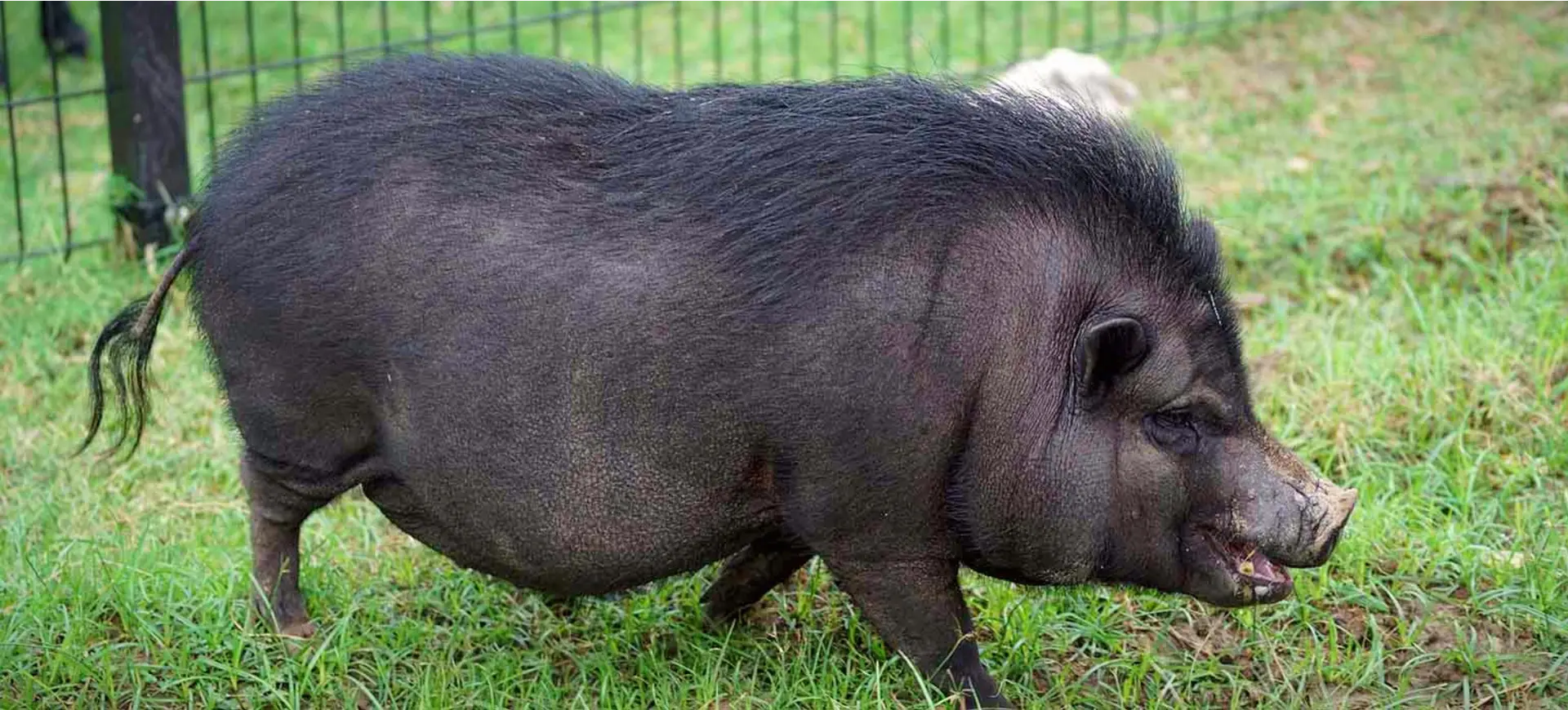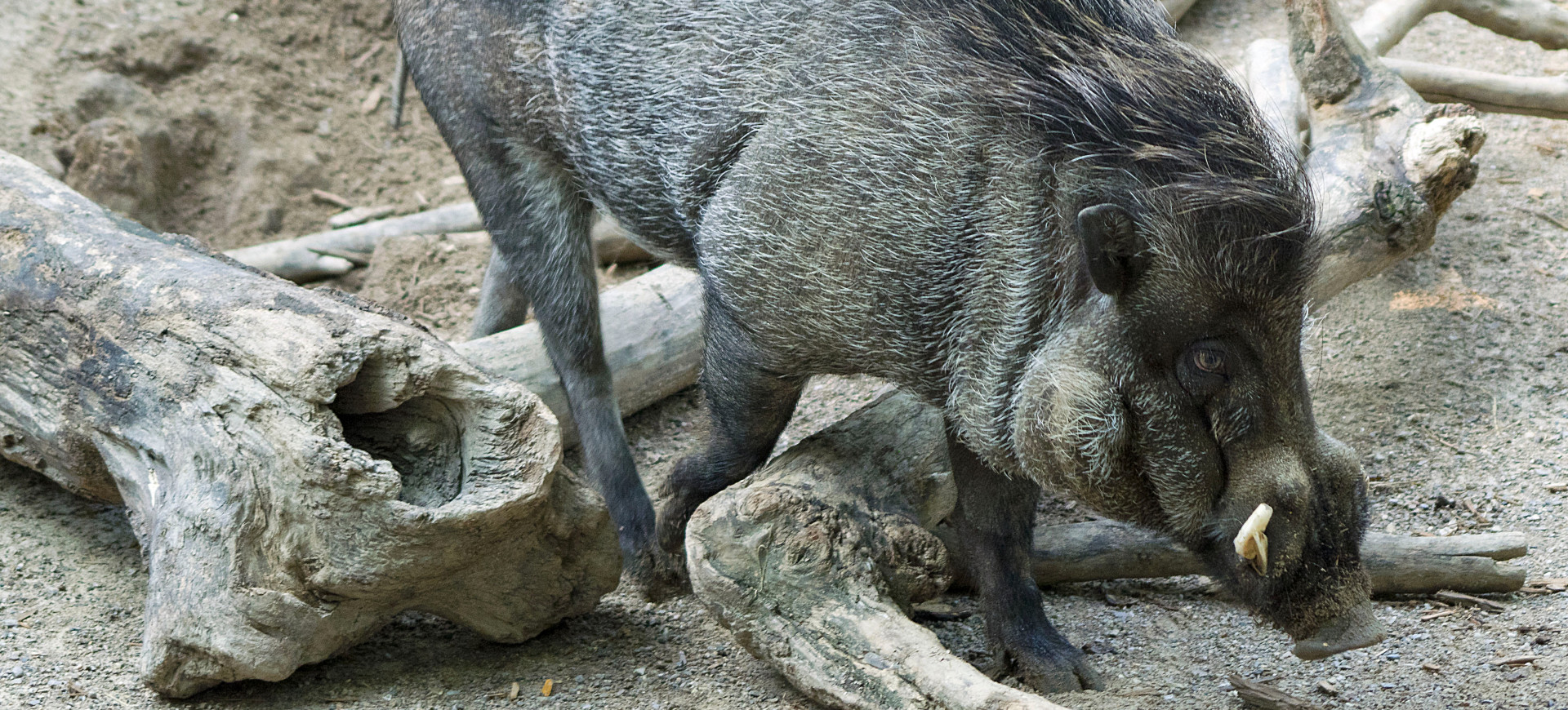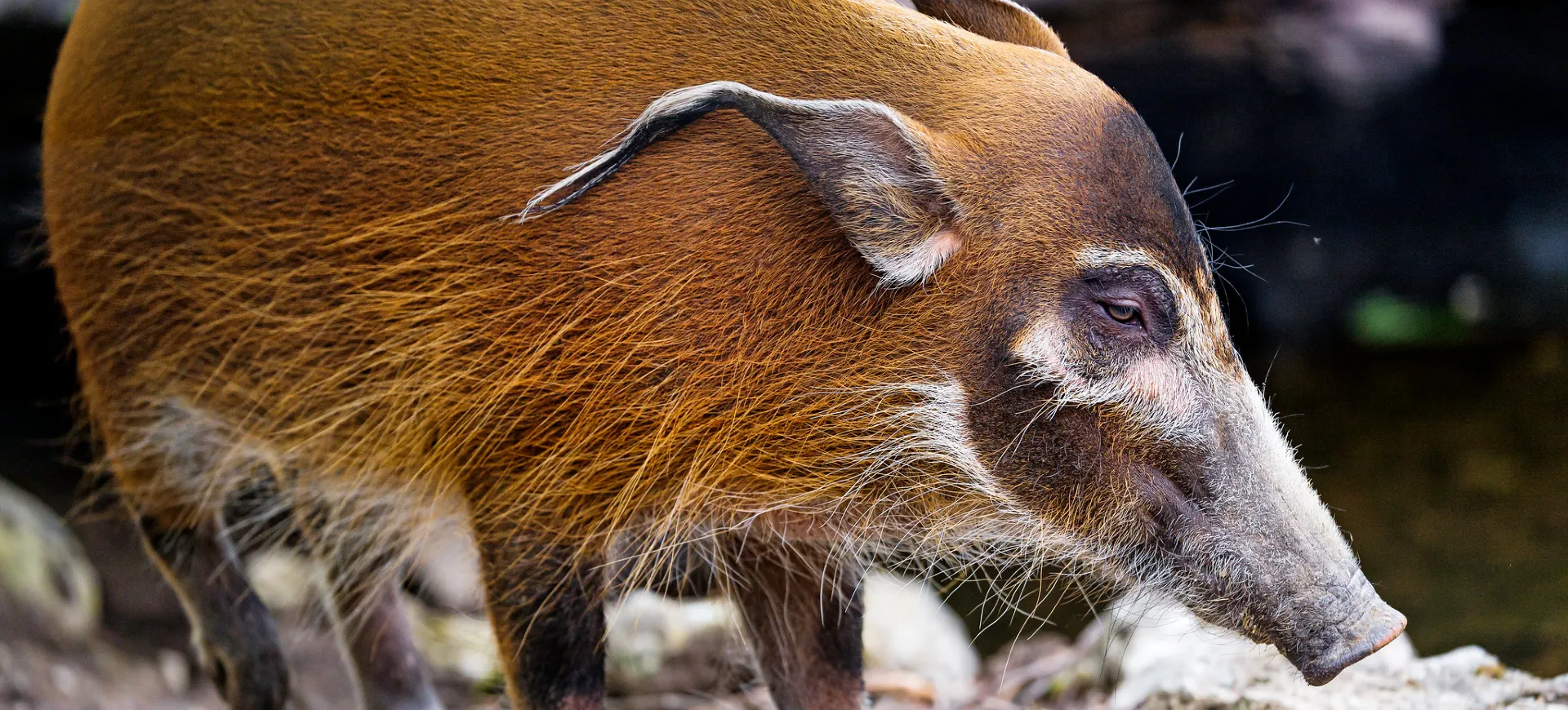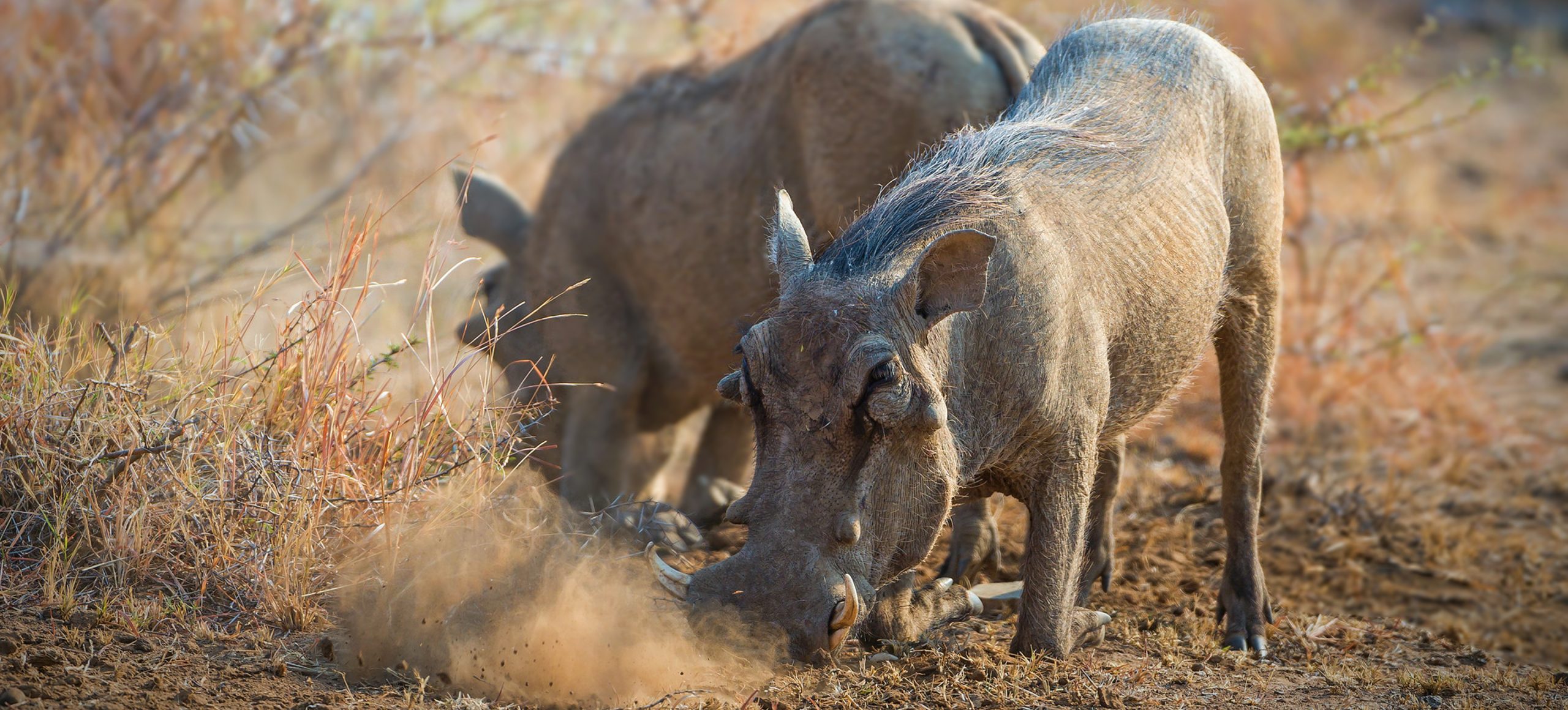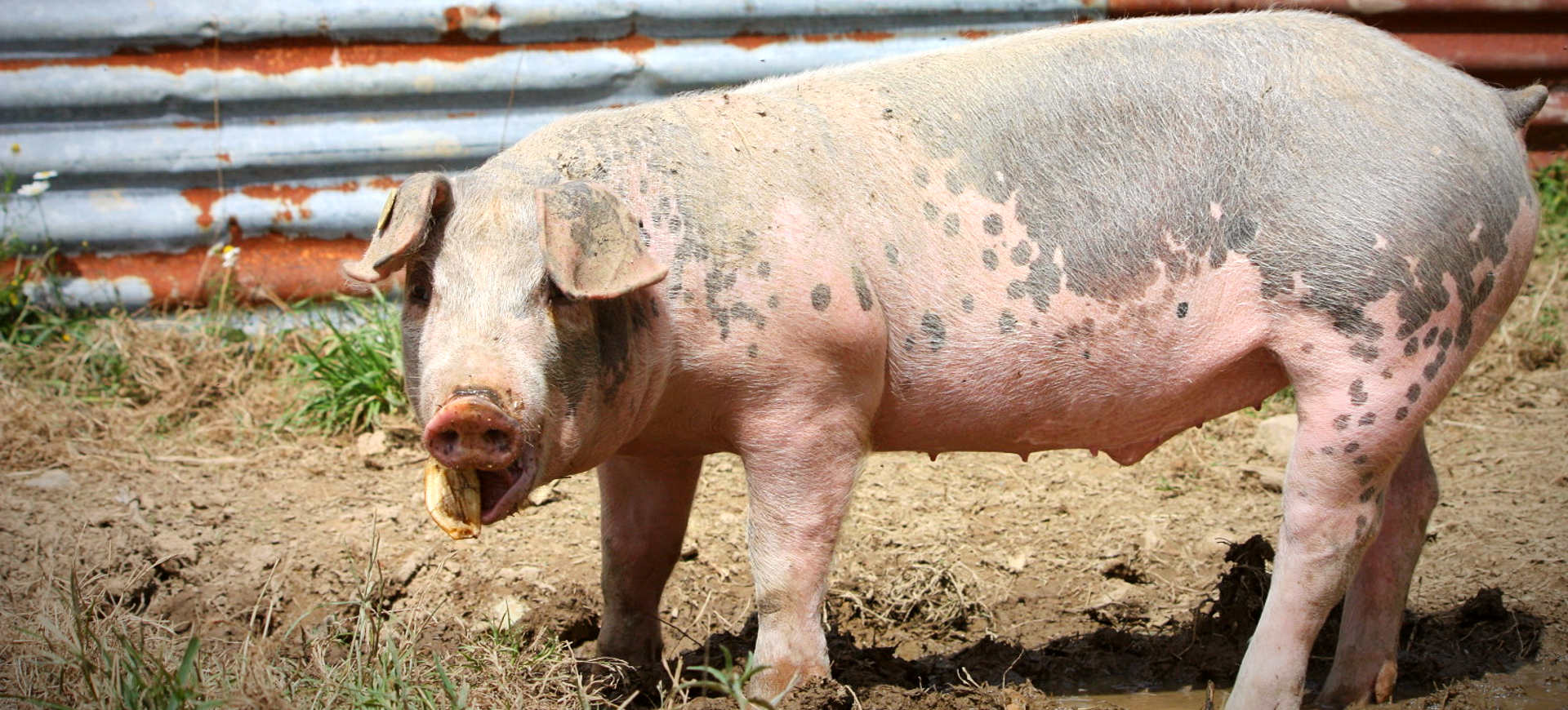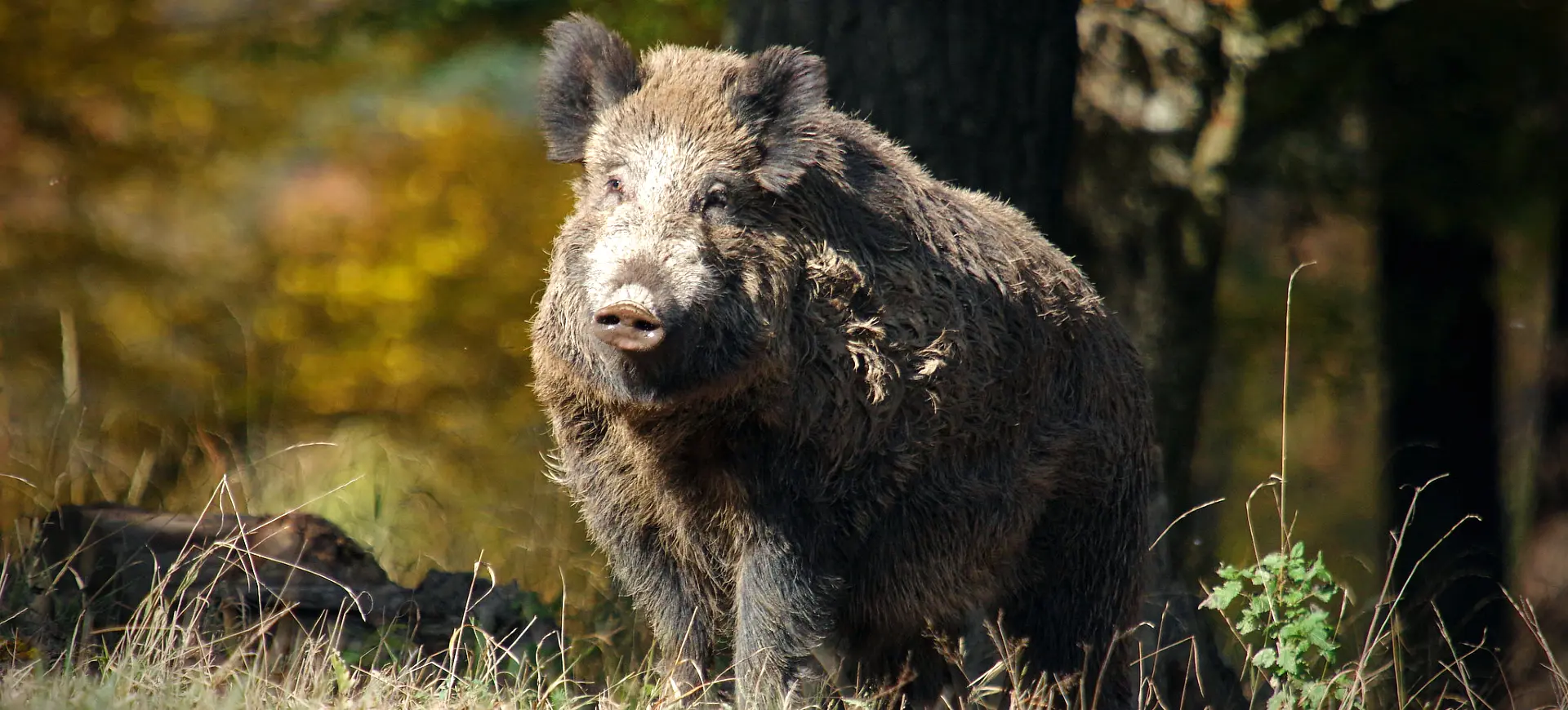Overview
The North Sulawesi Babirusa is a remarkable pig-like mammal predominantly found in the Indonesian islands of Sulawesi and surrounding areas. It is noted for its unique upper canine teeth, which grow upward through the skin, curving back towards the forehead. Unlike conventional pigs, the Babirusa lacks a snout but has a more elongated, deer-like face. The animal’s skin is relatively hairless, slightly wrinkled and often gray or brownish.
It possesses a unique set of dentition, where the lower canines grow upwards but are usually worn down by constant grinding against the upper pair. The absence of a large snout allows for the upward growth of the canines, which can pose a risk of piercing their skull if not ground down naturally or broken off. While the exact reason for this dental architecture remains a subject of scientific inquiry, it is hypothesized to result from sexual selection.
Predominantly solitary, the North Sulawesi Babirusa is omnivorous, consuming various foods, from fruits and leaves to small animals. Due to deforestation and hunting, it is considered a vulnerable species by the IUCN. Its habitats are rapidly shrinking, posing a severe threat to its survival.
Taxonomy
Kingdom
Phylum
Class
Order
Family
Genus
Species
Type
Physical Description:
The North Sulawesi Babirusa has a somewhat distorted pig-like appearance, with a slender, almost deer-like face devoid of a snout. Its skin is typically grayish to brownish and is relatively bare, with a wrinkled texture. The animal’s most distinct feature is its canines; the upper pair grows up through the skin and curves backward towards the forehead.
Males are generally more robust and larger than females, and they are the only ones with the characteristic long, curved upper canines. These canines can grow to considerable lengths and present a unique sexual dimorphism within the species. The overall physique of the animal is lean, and it lacks the bulkiness commonly associated with typical pig species.

Lifespan: Wild: ~10 Years || Captivity: ~24 Years

Weight: Male: 220 lbs (100 kg) || Female: 150 lbs (68 kg)

Length: Male: 43 inches (109 cm) || Female: 40 inches (102 cm)

Height: Male: 30 inches (76 cm) || Female: 27 inches (69 cm)

Top Speed: 15 mph (24 km/h)
Characteristic:
Native Habitat:
The North Sulawesi Babirusa is indigenous to the Indonesian island of Sulawesi and some smaller islands. It prefers forested areas near water bodies, which provide food and wallowing opportunities. These habitats range from tropical rainforests to riverbanks and swamps.
Due to rapid deforestation and habitat loss, the natural range of the North Sulawesi Babirusa has significantly contracted. Although still found in forest pockets, these are increasingly fragmented, creating isolated populations and posing considerable conservation challenges.
Climate Zones:
Biomes:
Biogeographical Realms:
Continents:
Countries:
Diet:
Diet & Feeding Habits:
The North Sulawesi Babirusa is an omnivore, feeding on various foods such as leaves, fruits, small mammals, and insects. They are known to root around in the ground, similar to typical pigs, although their less developed snouts make them less efficient. They also consume tubers and other underground food sources when available.
Because of their omnivorous nature, Babirusas are highly opportunistic feeders. When food is scarce, they are known to venture into agricultural areas, causing potential conflicts with local farmers. They can digest various plant materials thanks to their complex, multi-chambered stomachs.
Mating Behavior:
Mating Description:
The North Sulawesi Babirusa has a polygynous mating system where males may have multiple female partners. The male Babirusas engage in intense fights to secure mates, using their prominent upper canines as weapons. These fights can sometimes result in injuries but are crucial for establishing dominance.
Females enter estrus roughly every 42 days and display restlessness and vocalizations to attract males. Once impregnated, they tend to separate from the herd to give birth and remain secluded until the offspring are strong enough to join the rest of the group. They typically give birth to 1-2 offspring per litter.
Reproduction Season:
Birth Type:
Pregnancy Duration:
Female Name:
Male Name:
Baby Name:
Social Structure Description:
The social structure of the North Sulawesi Babirusa is somewhat fluid but is generally characterized by small groups or solitary individuals. Adult males are predominantly solitary and tend to have home ranges that overlap with those of females. Conversely, females can sometimes be found in small groups, particularly when raising offspring.
In terms of hierarchy, older and larger males typically dominate younger ones. During the mating season, aggressive behaviors and fights among males become more common to establish mating rights. The social dynamics are less aggressive once the mating season is over, but males generally keep to themselves.
Groups:
Conservation Status:
Population Trend:
The North Sulawesi Babirusa is facing critical challenges to its survival, with conservationists raising alarm about its rapidly decreasing numbers. While comprehensive data is lacking, current estimates indicate that there are roughly 10,000 individuals left in the wild. This number represents a significant decrease from historical populations, and the primary factors responsible for this decline are habitat loss due to deforestation and illegal hunting for meat and tusks.
In addition to dwindling numbers, the remaining Babirusa populations are experiencing severe fragmentation, mostly due to human encroachment and land conversion for agriculture and settlements. This fragmentation has led to isolated pockets of populations that find it difficult to intermingle, posing a serious risk to maintaining genetic diversity within the species. Consequently, these isolated and fragmented populations become more susceptible to diseases and inbreeding, making them even more vulnerable and adding another dimension to the urgency of their conservation status.
Population Threats:
Hunting is a considerable danger to the North Sulawesi Babirusa, significantly contributing to its declining numbers. The animals are often hunted for their meat, which is considered a delicacy in some local communities. Additionally, their unique tusks are also a target, especially in areas where local traditions and ceremonies involve these tusks, thereby exacerbating the already precarious situation for this species.
The threat of habitat loss is equally significant and has multi-faceted implications for the North Sulawesi Babirusa. Agricultural expansion, human settlements, and logging activities have led to widespread deforestation, severely affecting the natural habitats of these animals. The resulting fragmentation makes it increasingly difficult for Babirusas to find essential resources like food and water and locate mates for reproduction, all of which have long-term detrimental impacts on their survival prospects.
Conservation Efforts:
Several conservation initiatives aim to protect the North Sulawesi Babirusa. Protected areas such as the Bogani Nani Wartabone National Park offer a sanctuary for these creatures. In these areas, anti-poaching measures have been strengthened, and efforts are ongoing to engage local communities in conservation activities.
Education and awareness-raising are other important conservation tools. By educating local communities about the importance of the Babirusa to the ecosystem and their vulnerable status, it is hoped that hunting pressures can be reduced. Captive breeding programs also exist but are limited in their effectiveness due to the animal’s complex social structures and dietary needs.
Additional Resources:
Fun Facts
- The name “Babirusa” means “pig deer” in Malay, referencing its unique appearance.
- The upper canines can grow so long they can curve back and penetrate the animal’s skull.
- Babirusas are good swimmers and often cross rivers and small bodies of water.
- Despite their pig-like appearance, they are more closely related to hippopotamuses and whales than other pig species.
- The animal is considered a national treasure in Indonesia.
- Unlike other pigs, Babirusas have a two-chambered stomach, adapted to their varied diet.
- They also stand on their hind legs to feed on higher leaves and fruits.
- Babirusas have been known to live up to 24 years in captivity, although their lifespan in the wild is generally much shorter.
- Males engage in combat by standing on their hind legs and “boxing” each other with their hooves.
- They have a keen sense of smell but relatively poor eyesight.







